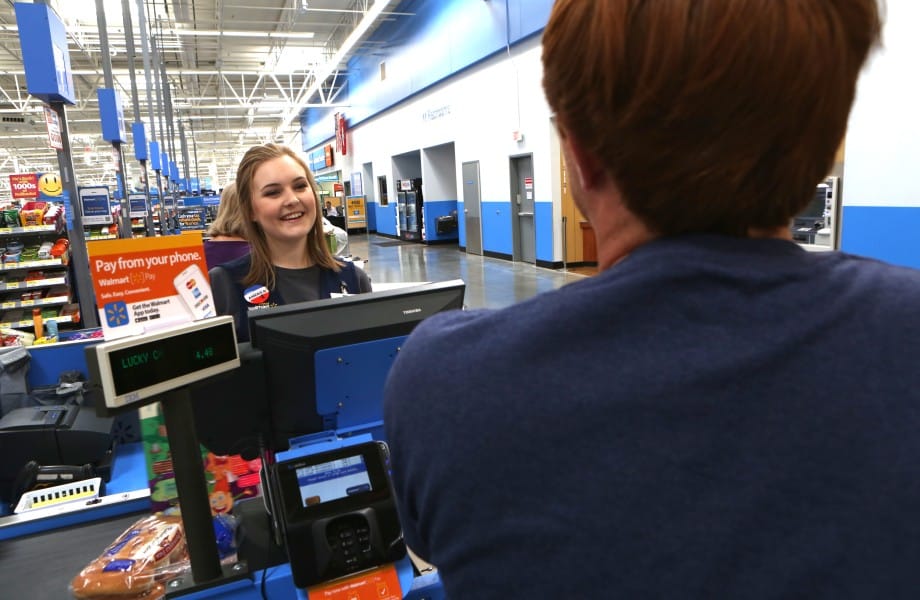
Is it a new consumer-friendly law that ensures you get the discounts you deserve, or a solution in search of a problem?
Either way, a measure regulating how sale prices are displayed as you check out is now the law in one state.
The governor of Illinois has signed into law a bill first introduced more than a year ago, which requires grocery stores to “display both the regular price and discounted price of an item” on the checkout screen as it’s scanned. That’s as opposed to “delaying the showing of the discounted price until the total price of all items is displayed.”
So if, say, an item is on sale for a dollar off regular price, both the full price and the full price less one dollar must be displayed when it’s scanned – that dollar can’t be subtracted at the end of the transaction.
The bill’s sponsor, Representative Natalie Manley of Joliet, said she was once behind an older woman in a checkout line, who was charged full price for butter that was supposed to be on sale.
“As her butter rang up at full price, she mentioned the sale to the cashier, who told her the discount would come off at the end of the transaction. Unfortunately, the system glitched, and the sale price was not credited to the woman, who realized this while trying to find more change in her purse to pay,” Manley explained. “The problem had to be resolved at the service desk, so I encouraged the woman to go get her money refunded… all the while thinking that this just should not happen!”
The experience turned into a light-bulb moment for her. “That started me thinking that I would like to see it on the screen as my item is being scanned,” Manley told Chicago’s WBBM Newsradio.
State Senate co-sponsor Meg Loughran Cappel of Shorewood agreed this kind of consumer confusion was a problem that needed to be solved. “When shoppers check out at the supermarket, they don’t always see the sale price of an item on the screen during a transaction,” she said in a statement. “There shouldn’t be confusion if the computer system gave you a discount or having to hope the discount will be taken off at the end.”
Retailers already display sale prices on signs, shelf tags and on your receipt. But “there is nothing written in law concerning how prices and discounts are displayed during checkout,” Loughran Cappel explained. “This new law helps protect shoppers and their money.”
Notably, the law defines “discount” as including “any coupon or promotion in an electronic, digital, paper, or any other format.” So it would appear that if you scan a loyalty card before your items are rung up, and you have digital coupons loaded to your account, those coupon discounts also must be displayed on the checkout screen as each eligible item is scanned, and not deducted at the end of the transaction.
All states already have some form of accuracy-in-scanning laws, which at minimum require retailers to refund the difference in price if an item scans for more than its actual selling price. Some states also fine retailers, and others provide extra compensation to the customer. Michigan’s law is particularly generous – if an item rings up higher than it’s marked, you get a refund plus ten times the difference, up to $5.
And Massachusetts long held the distinction of being most suspicious of supermarket scanners. Until a decade ago, it was still the law that every single grocery item had to have a price sticker attached, so you knew what each item’s price was supposed to be as it was getting scanned at the checkout. The state finally amended the law, allowing stores to apply for a waiver to the price tag requirement if item prices are prominently marked on shelves and price scanners are available throughout the store. If any price rings up incorrectly, shoppers will get the item for free, up to a maximum of $10.
But Illinois’ new law is unique, in that it not only aims to ensure that prices are accurate, but that they’re displayed accurately as you check out, so you can see for yourself in real time if you’re getting the discounts you’re entitled to.
“The cost of groceries has drastically increased and many of us are making purchases based on sale information,” Manley said. “There should be no more wondering if the computer system gave shoppers the correct price, or having to hope the discount will be taken off at the end.”
The maximum fine for retailers who violate the new law is only $25 per incident, up to a maximum of $500 in a year. So it’s not exactly a major deterrent to noncompliance. But if you’ve ever missed out on a discount at the checkout – according to the law’s supporters at least – it’s a start.
Image source: Walmart










